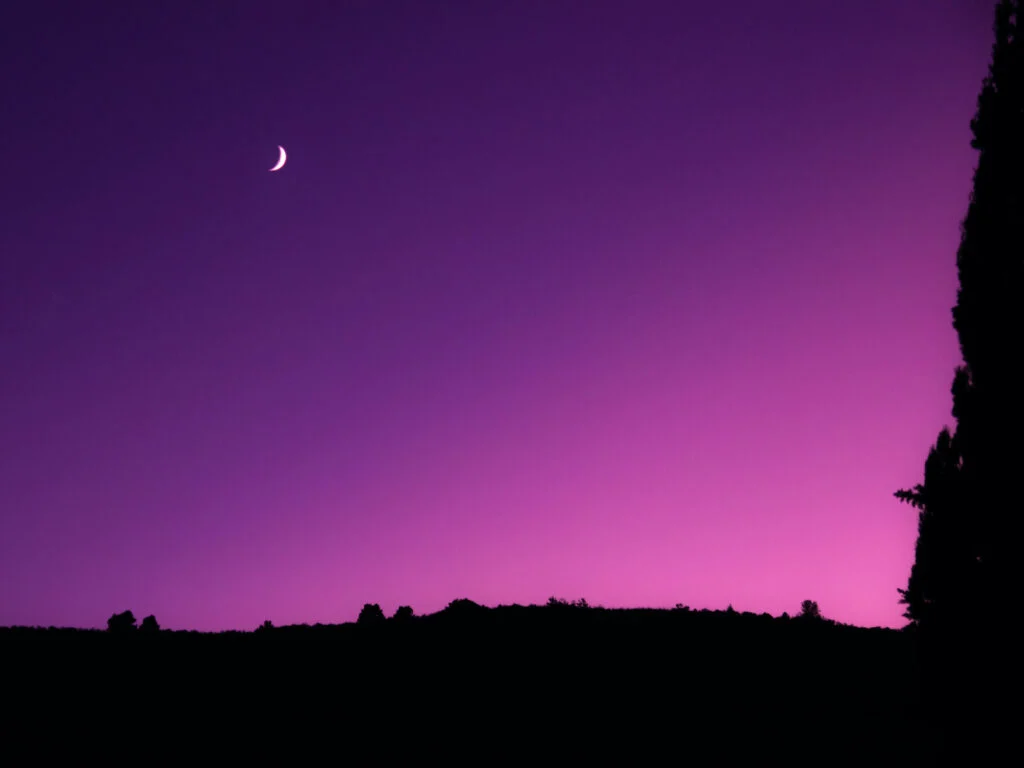Have you ever wondered why is the sky purple? Despite common belief, the sky is not actually blue. And while a purple sky can be a stunning spectacle, it often signals potential dangers lurking behind its captivating beauty. From hazardous air quality to the long-term health effects of wildfire smoke, understanding the science behind these vibrant displays is crucial for our well-being. Let’s delve into the atmospheric secrets and unravel the sobering truths hidden within those mesmerizing hues.
Why a Purple Sky is Dangerous
A purple sky, while visually appealing, can be a warning sign from Mother Nature. It often indicates problems in the atmosphere that directly impact our health and safety.
One of the primary reasons for a purple sky is poor air quality. The Air Quality Index (AQI) uses purple to signify unhealthy levels of particulate matter – tiny particles of dust, smoke, and other pollutants. Breathing in these particles irritates our airways, leading to coughing, wheezing, and difficulty breathing, especially for individuals with asthma or bronchitis. In severe cases, it can even affect heart health.
Dust storms, another contributor to purple skies, create a haze of fine dust particles, reducing visibility and posing risks for drivers and people outdoors. Inhaling this dust is detrimental to respiratory health and can trigger allergies.
Wildfires, a growing concern worldwide, release massive amounts of smoke and ash into the atmosphere, turning the sky into a canvas of purple and red hues. This smoke is a serious health hazard, causing respiratory problems, eye irritation, and even heart issues. Similarly, volcanic eruptions can spew volcanic ash high into the atmosphere, producing similar effects.
Even more alarming are chemical spills, which release dangerous gases that can tint the sky purple. These gases pose immediate threats to human health and require immediate evacuation and safety measures.
Interestingly, the violet light often present in a purple sky may also impact our mental well-being. Some people report feelings of anxiety, sadness, or disrupted sleep patterns when exposed to these hues.
Therefore, while a purple sky might be tempting to capture for a stunning photograph, it’s vital to prioritize safety and consider the potential health risks involved.
The Science Behind Purple Skies: How Smoke and Light Interact
The captivating colors of a purple sky result from a fascinating interplay of light and atmospheric particles.
Sunlight is made up of all the colors of the rainbow. When these rays hit particles in the atmosphere, like dust or smoke, they get scattered in different directions. This phenomenon, known as Rayleigh scattering, explains why we see a blue sky on a clear day. Blue and violet light, having shorter wavelengths, scatter more easily than other colors, making them more visible.
However, when smoke fills the air, the scattering dynamics change. The larger smoke particles scatter longer wavelengths of light (red and orange), making them more dominant in the sky. This, combined with the scattered blue and violet light, creates the stunning purple hues we often see during sunsets or after volcanic eruptions.
Auroras, the mesmerizing light shows in polar regions, are another example of this phenomenon. Charged particles from the sun interact with Earth’s magnetic field, exciting atoms in the atmosphere. Oxygen emits green and red light, while nitrogen glows purple, painting the sky with these surreal, dancing lights.
In essence, purple skies, whether caused by smokey sunsets or auroras, showcase the incredible ways light interacts with our atmosphere, reminding us of the wonders of the natural world.
Is a Purple Sky Dangerous? Health Impacts and Concerns
While a purple sky itself may not be inherently dangerous, it often serves as a warning sign of potential hazards.
Mother Nature’s Warning Signals
A purple sky can be a precursor to severe weather events. For instance, the way sunlight interacts with moisture-laden clouds in a developing hurricane can create an eerie purple glow. Similarly, wildfires and dust storms, which also produce purple skies, bring their own set of dangers.
STEVE: A Unique Atmospheric Phenomenon
Then there’s STEVE, short for Strong Thermal Emission Velocity Enhancement – a celestial spectacle that appears as a ribbon of purple light in the sky. Unlike auroras, STEVE is not caused by charged particles from the sun. While scientists are still unraveling its mysteries, STEVE highlights the dynamic nature of our atmosphere and the various factors that can influence the sky’s color.
Volcanic Eruptions and the Purple Afterglow
Volcanic eruptions, while devastating, often leave behind a breathtaking visual legacy – a sky awash in vibrant hues of purple and pink. This phenomenon occurs when fine volcanic particles, ejected high into the atmosphere, scatter sunlight, acting like a giant prism and creating those surreal colors.
Light Pollution: A Threat to Our Night Skies
While not directly related to dangerous events, light pollution from our cities diminishes our ability to see those subtle purple hues in the night sky. The excessive artificial light washes out the stars, planets, and those naturally occurring atmospheric light shows. Additionally, studies suggest that light pollution can disrupt sleep patterns and have long-term impacts on human health.
Recognizing the Real Dangers
It’s crucial to understand that the danger lies not in the purple sky itself, but in the underlying causes. The smoke from a wildfire, the dust from a storm, or the gases from a chemical spill – these are the real threats that require our attention.
A purple sky serves as a reminder to stay informed, check weather reports, and take necessary precautions. It’s a call to be aware of our surroundings and make responsible decisions to protect ourselves and our communities.
Beyond the Beauty: The Potential Long-Term Effects of Wildfire Smoke
While wildfire smoke contributes to the captivating purple skies, it poses significant long-term health risks that extend far beyond the immediate aftermath of a fire.
Breathing Trouble on the Horizon
Inhaling wildfire smoke means introducing tiny, invisible particles called particulate matter deep into our lungs. These particles irritate and inflame the airways, causing persistent breathing difficulties. People with pre-existing respiratory conditions like asthma and COPD are particularly vulnerable and often experience exacerbated symptoms, leading to increased hospitalizations. The damage caused by these particles can be long-lasting, potentially leading to chronic respiratory issues.
A Heavy Burden on the Heart
The impact of wildfire smoke extends beyond the lungs, affecting cardiovascular health as well. These tiny particles can enter the bloodstream, increasing the risk of heart attacks and strokes. Prolonged exposure to wildfire smoke has been linked to an increased risk of developing heart disease, a leading cause of death globally.
The Unseen Impact on the Youngest Lives
Pregnant women and children are most susceptible to the harmful effects of wildfire smoke. Studies indicate that prenatal exposure to wildfire smoke can affect fetal development, potentially leading to low birth weight and other complications. Children, with their still-developing lungs, are more vulnerable to the damaging effects of smoke inhalation, which can contribute to lifelong respiratory problems.
Beyond the Physical: The Mental Toll of Wildfire Smoke
Living through a wildfire and experiencing prolonged exposure to smoke takes a toll on mental health as well. The trauma of displacement, loss of property, and the constant fear of recurring fires can lead to anxiety, depression, and even post-traumatic stress disorder (PTSD).
Protecting Ourselves and Our Future
Understanding the long-term health impacts of wildfire smoke is crucial for safeguarding individual and community well-being. We must be proactive in reducing exposure by using air purifiers, wearing masks on smoky days, and staying informed about air quality levels. Supporting policies that address climate change and promote responsible forest management is essential in preventing future wildfires and protecting our health.
- Mastering Leader in Spanish: The Complete Guide - April 19, 2025
- Uncovering Surprising Parallels: England Size Compared to US States - April 19, 2025
- Old Mexico Map: Border Shifts 1821-1857 - April 19, 2025
















